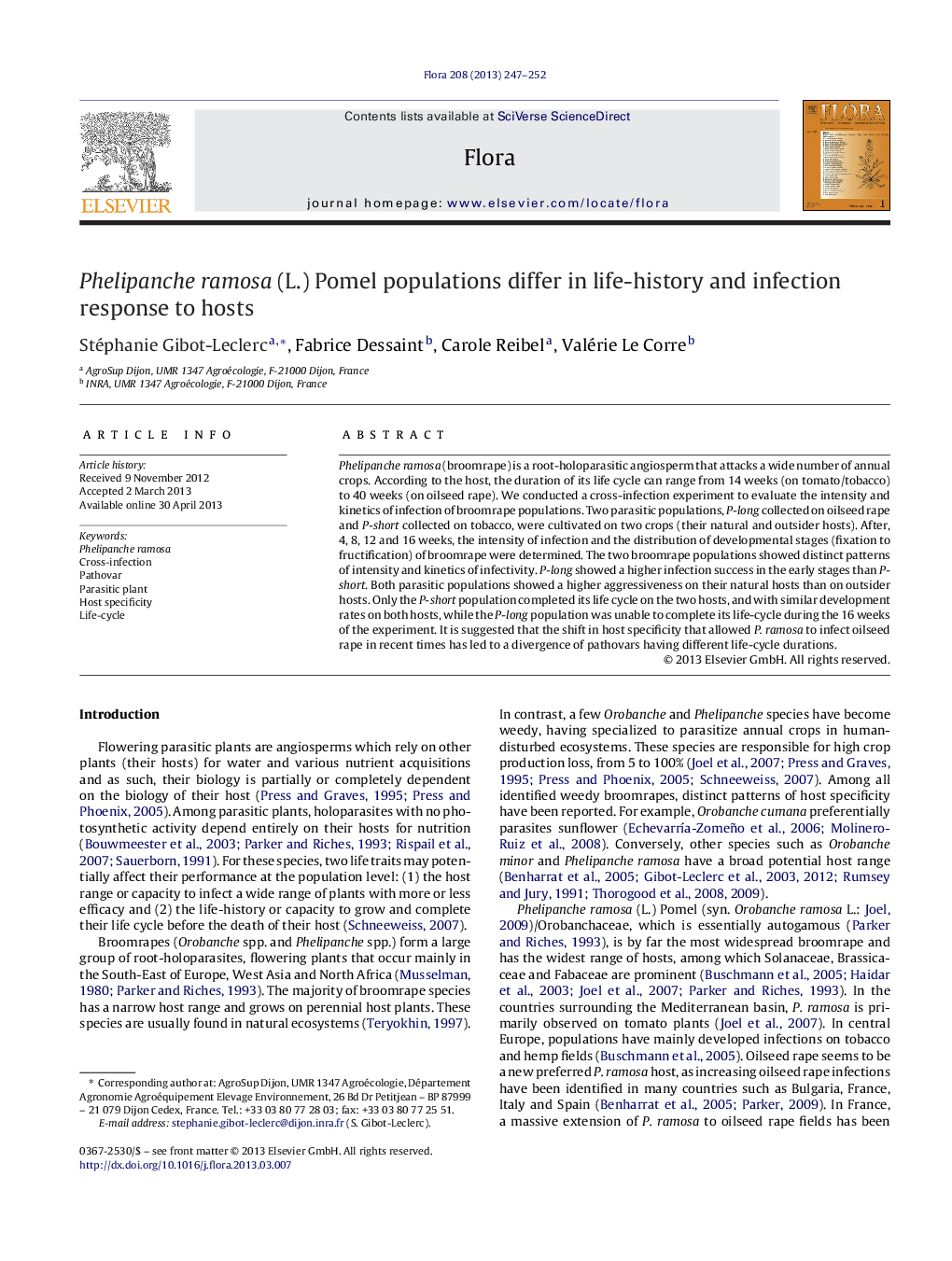| Article ID | Journal | Published Year | Pages | File Type |
|---|---|---|---|---|
| 2179479 | Flora - Morphology, Distribution, Functional Ecology of Plants | 2013 | 6 Pages |
Phelipanche ramosa (broomrape) is a root-holoparasitic angiosperm that attacks a wide number of annual crops. According to the host, the duration of its life cycle can range from 14 weeks (on tomato/tobacco) to 40 weeks (on oilseed rape). We conducted a cross-infection experiment to evaluate the intensity and kinetics of infection of broomrape populations. Two parasitic populations, P-long collected on oilseed rape and P-short collected on tobacco, were cultivated on two crops (their natural and outsider hosts). After, 4, 8, 12 and 16 weeks, the intensity of infection and the distribution of developmental stages (fixation to fructification) of broomrape were determined. The two broomrape populations showed distinct patterns of intensity and kinetics of infectivity. P-long showed a higher infection success in the early stages than P-short. Both parasitic populations showed a higher aggressiveness on their natural hosts than on outsider hosts. Only the P-short population completed its life cycle on the two hosts, and with similar development rates on both hosts, while the P-long population was unable to complete its life-cycle during the 16 weeks of the experiment. It is suggested that the shift in host specificity that allowed P. ramosa to infect oilseed rape in recent times has led to a divergence of pathovars having different life-cycle durations.
